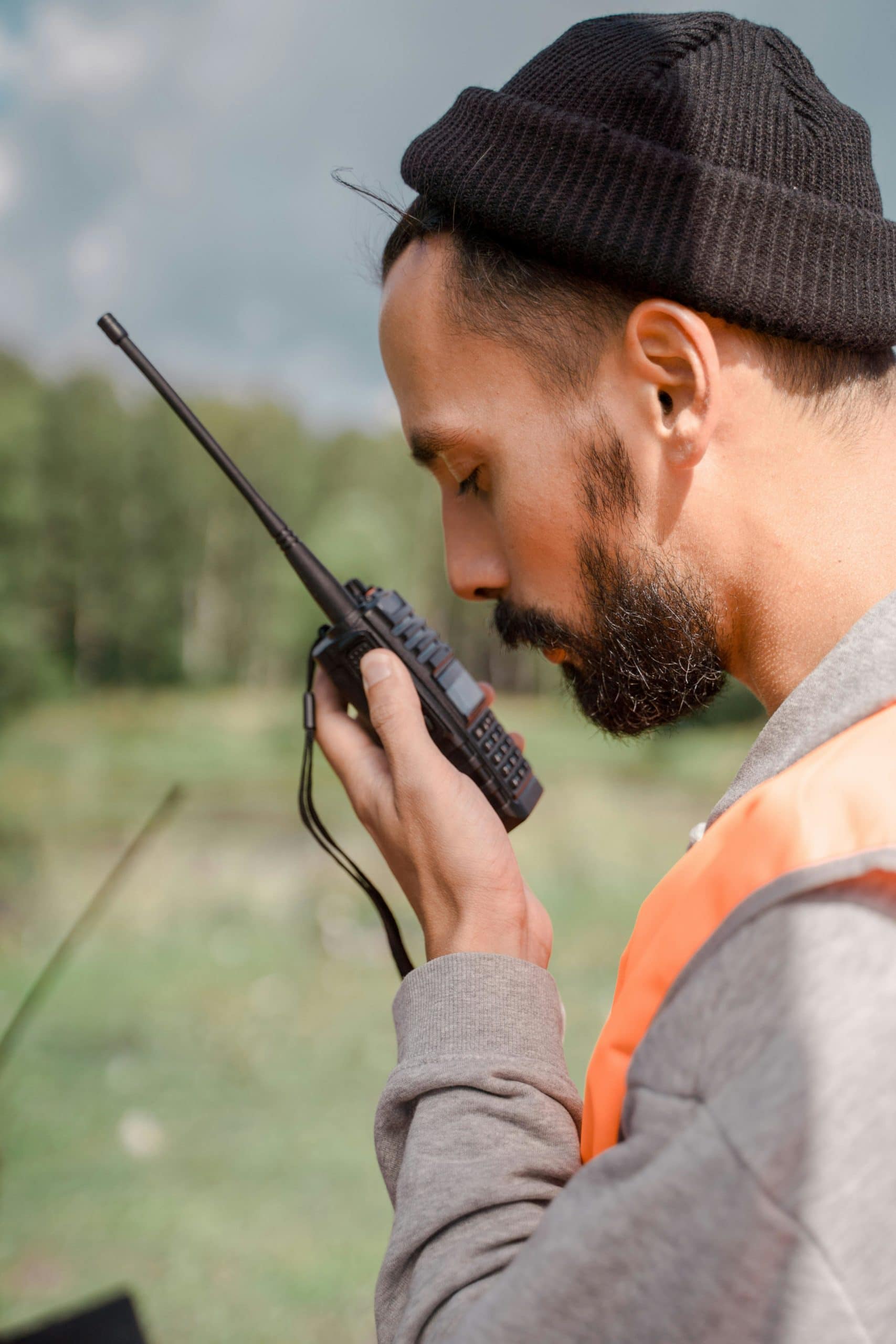In the world of long-distance communication, the long-range walkie-talkie stands out as an efficient and reliable solution. Whether for professionals on missions in vast and complex terrains or outdoor adventure enthusiasts, the ability to communicate clearly without relying on mobile phone networks is crucial. The radio waves used by these devices enable instant communication over several kilometers, providing a robust alternative in environments where other communication methods may fail. The Motorola brand, known for its professional long-range walkie-talkies, exemplifies excellence in this field by offering products designed to overcome the challenges of long-distance communication.
There are several main factors influencing the range and performance of walkie-talkies, from the physical characteristics of the devices to advanced technologies that enhance their ability to operate over long distances. There are also various practical use cases for long-range walkie-talkies, highlighting their versatility and reliability in many scenarios and their transmission power. Key points to consider when choosing the right long-distance walkie-talkie for your needs include the innovations and solutions offered by industry leaders like Motorola, who continue to push the boundaries of wireless communication.
Key factors affecting the range of walkie-talkies
The factors influencing the range of two-way radios are varied and largely depend on the environment and usage conditions. Here are the main elements to consider:
- Environmental interference and physical obstacles
The presence of obstacles such as buildings, mountains, and even vegetation can significantly reduce the communication range. Radio waves, which propagate in a straight line, are likely to be blocked by these physical barriers, thus affecting the clarity and transmission distance. - Weather conditions
Humidity, rain, and other atmospheric conditions can also influence the range of walkie-talkies. For instance, a very humid environment can absorb radio waves and reduce their effective range. - Type of terrain (urban, rural, mountainous)
The type of terrain plays a crucial role. In urban areas, the density of constructions can limit the range, while in mountainous areas, valleys and peaks can create unique challenges for signal transmission. - Technologies used and frequency efficiency
Different frequencies, such as UHF and VHF, have distinct capabilities for penetration and obstacle circumvention. UHF is generally better suited to urban environments with many obstacles, while VHF is more effective in open or rural terrain.
These elements must be taken into account to optimize the use of walkie-talkies and ensure effective communication, even in difficult conditions.
Advanced technologies increasing the range of walkie-talkies
PoC/LTE system for global communication
The Push-to-talk Over Cellular (PoC) system, using LTE (3G/4G) networks, revolutionizes walkie-talkie communication by offering unlimited range. This technology allows users to connect via mobile networks, eliminating the typical distance constraints of UHF or VHF frequencies. The 4G, and soon 5G, walkie-talkies benefit from significant improvements in coverage and audio quality, enabling clear and reliable communications.
Use of 3G/4G/5G/WLAN networks
Modern walkie-talkies integrate 3G, 4G, and WLAN connectivity, ensuring uninterrupted communication given network coverage. This versatility allows extensive use, from densely populated urban areas to open rural environments, maximizing operational flexibility for users.
Noise reduction and clarity enhancement technologies
Advanced PoC radios offer not only extended range but also superior audio quality. Digital technology in these devices reduces background noise and enhances communication clarity, essential in noisy environments. This feature is crucial for professionals requiring clear and precise communication, regardless of external conditions.
Practical use cases of long-range walkie-talkies
Logistics sector and interregional communication
In the logistics sector, interregional communication is essential. Motorola long-range walkie-talkies facilitate clear voice communication between employees, even over vast terrains and different regions, thus improving operational efficiency.
Public transport and travel coordination
Taxi drivers and other public transport professionals frequently use telematics devices, including walkie-talkies, to coordinate travel effectively in urban areas, ensuring a smooth and coordinated service.
Forest area management
Forest protection officers greatly benefit from long-range walkie-talkies during extensive patrols. These devices enable quick and effective communication, essential for managing and monitoring vast forest areas.
Outdoor activities and emergency situations
During outdoor activities such as camping, hunting, climbing, or hiking, walkie-talkies are crucial for maintaining contact with group members and ensuring safety. In emergencies, they allow immediate communication to request help or coordinate an evacuation.
In various professional and recreational situations, the importance of long-range walkie-talkies is vital. Technological advancements and physical device characteristics, along with environmental factors, all play a crucial role in the performance and reliability of long-distance communications. Motorola, with its range of innovative products, remains at the forefront of this technology, providing solutions that meet and exceed communication expectations, particularly in the most demanding conditions.
The ability to maintain clear and effective communication over long distances with professional walkie-talkies is more essential than ever, whether for coordinating outdoor activities, managing forest operations, or ensuring safety in the logistics sector. The implications of these technologies go far beyond their immediate use, opening avenues for future innovations and enhancing connectivity in the most inaccessible environments. We thus encourage not only the adoption of these advanced communication tools but also their continued development to meet tomorrow's challenges. Contact us to learn more!
